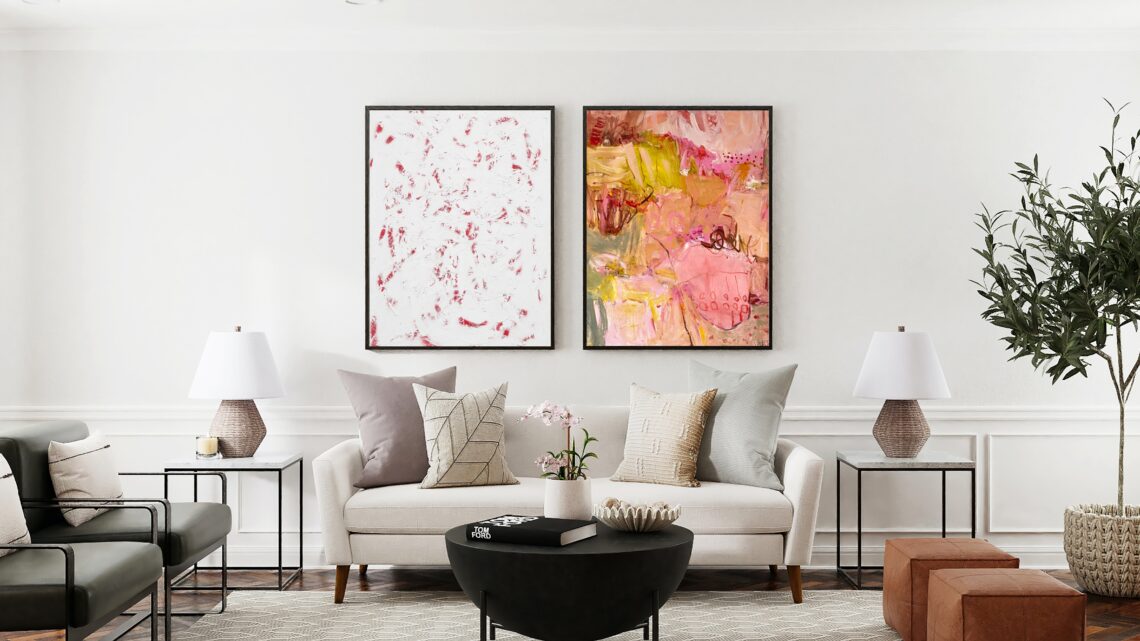So, you’re considering investing in some artwork? Great choice! Art is not only an original way to enhance your space, it can also be a financial asset that can increase in value over time. But, it’s not as simple as casually picking out a pretty piece and hoping for the best. There are several elements to consider before making a purchase, and we are here to provide you with an easy and efficient set of guidelines so that you make a smart and informed decision. So, let’s dive in and discover what to look for when choosing your next masterpiece!
1) Price
Is the artwork within your established allocated budget?
A good investment is only one you can afford. Decide the maximum amount you are willing to spend on an artwork. Once you begin your search, don’t be afraid to negotiate. In many cases, it is perfectly acceptable to make an offer lower than the listed price. In fact, many galleries expect this and are willing to sell works with a small discount. If you are buying more than one artwork, you may be able to get an additional price reduction. On the other hand, if you like an artwork that is much lower than your price point, don’t be afraid to maximize your investment: you can seek a larger work from the same artist or seek a more renowned artist with a similar style.
2) Past
Do you prefer searching for artwork on the primary or the secondary market?
The primary market refers to artworks on the market that have not been sold before. They are being put on the market for the first time since their creation, sold by a gallery or the artist themselves. The secondary market indicates the reselling of artworks that have been previously sold. For example, an art collector can resell a painting by putting it up for bidding at an auction house. Both options provide access to a different supply. If you find yourself searching the secondary market, find out the provenance of the piece as far back and as detailed as you can. Who has owned the artwork before and where has it been exhibited? This information will be necessary if you want to appraise or resell your work in the future.
3) Position
What is the current status of the artist?
If you find work that interests you, do some research on the artist. Try and decipher if an artist you are interested in is an emerging talent or an established star. As an artist’s renown increases, so do their prices. If an artist is represented by a high-profile gallery or, even better, exhibited in a museum, their stock rises. Try to situate the artist within the art world to better understand their reputation, and consequently, their estimation.
4) Potential
What is the current status of the artist?
Has your chosen artist displayed growth that hints at probable future success? Artists with careers that demonstrate an ascent indicate higher investment potential. This could mean a reputed artist whose prices have slowly but steadily risen over the decades. Or, it could be a fresh young artist who has just received their first mentions in major press. When deliberating an artist, consult their CV or track their documented sales to determine aspects of tangible progress.
5) Persistence
Do you envision this work as an interminable source of value, beyond the current art market trends and cycles?
A good investment is made with both the head and the heart. Beyond indications of market worth, your chosen artwork should also hold personal value. Art is one of the rare long-term investments you can enjoy each day, so it is important that you love it! Maybe you resonate with the artist’s story, or perhaps the color palette generates a positive energy within you. Art is often subjective, so there are non-tangible factors that can add value to a worth of art…don’t forget to factor those in! Elements such as high-quality materials and well-executed techniques will also make a piece timeless. Prioritize a long-term vision when making your final decision, and choose work that you believe will be unwavering in both its sentimental and monetary worth.


















